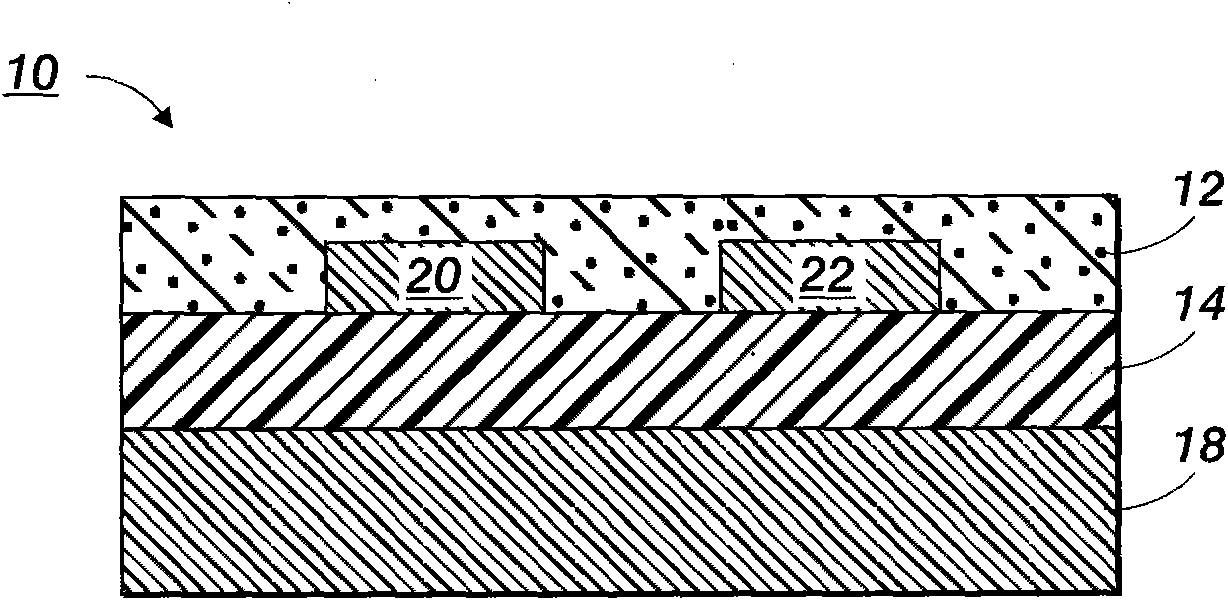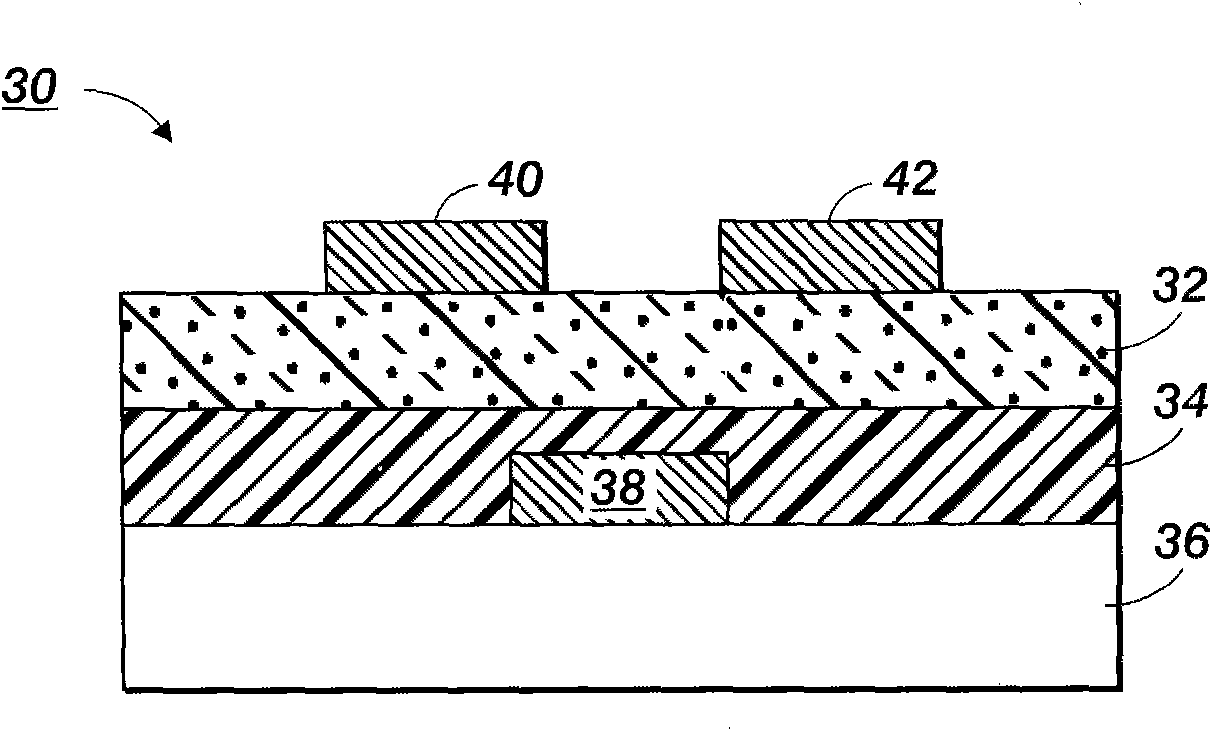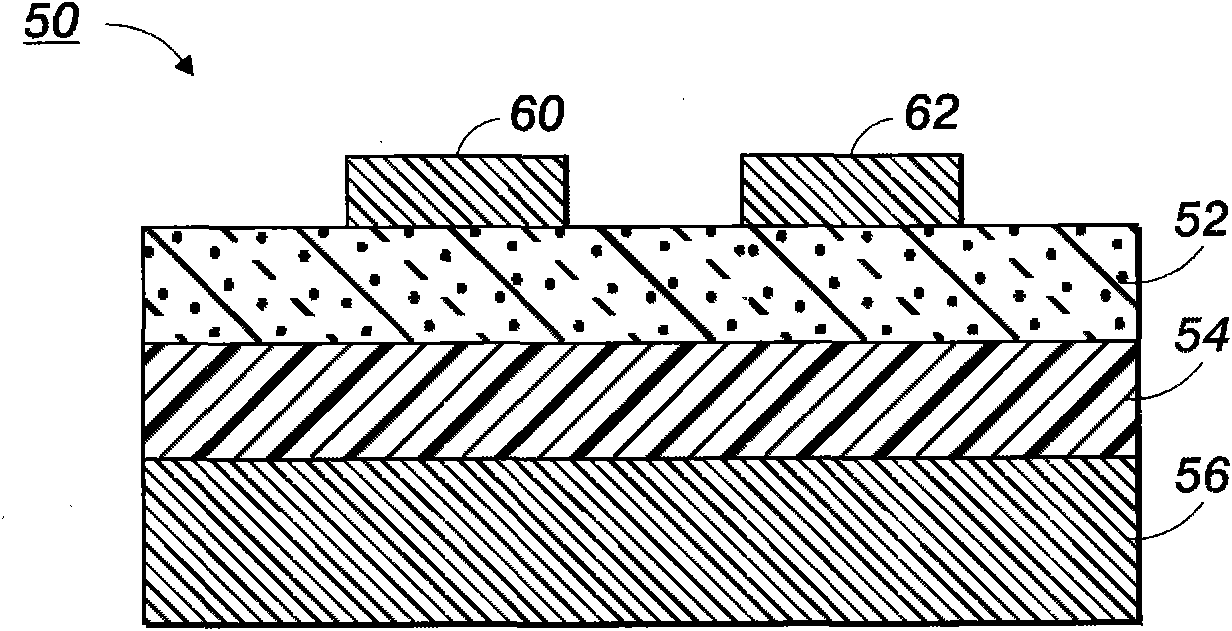Feature forming process using plasma treatment
A plasma and component technology, applied in the fields of electric solid state devices, semiconductor devices, semiconductor/solid state device manufacturing, etc., can solve problems such as the inability to achieve high electrical conductivity
- Summary
- Abstract
- Description
- Claims
- Application Information
AI Technical Summary
Problems solved by technology
Method used
Image
Examples
Embodiment 1
[0084] The aforementioned low-conductivity thin film was immersed in a 0.1 M acetic acid toluene solution for 5 minutes. After rinsing with toluene, the membrane was dried at 140 °C for 1 min to yield a 2.84×10 4 Highly conductive film with a conductivity of S / cm. The conductivity increased by 5 orders of magnitude.
Embodiment 2
[0086] Similar to Example 1, the low-conductivity thin film was dipped in a 0.02 M solution of dilute acetic acid in toluene for 5 minutes. After rinsing with toluene, the membrane was dried at 140 °C for 1 min to obtain a 2.21×10 4 High conductivity thin film with conductivity of S / cm. Even with very dilute acid solutions, the conductivity increased by 5 orders of magnitude.
Embodiment 3
[0090] The low-conductivity thin film in Comparative Example 2 was immersed in a 0.5 M acetic acid toluene solution for 5 minutes. After rinsing with toluene, the membrane was dried at 120 °C for 1 min to obtain a 2.4×10 4 A highly conductive film with a conductivity of S / cm, the conductivity has increased by 5-6 orders of magnitude. This also indicates that lower heating temperatures can be used with the acid treatment method.
PUM
| Property | Measurement | Unit |
|---|---|---|
| thickness | aaaaa | aaaaa |
| thickness | aaaaa | aaaaa |
| thickness | aaaaa | aaaaa |
Abstract
Description
Claims
Application Information
 Login to View More
Login to View More - R&D Engineer
- R&D Manager
- IP Professional
- Industry Leading Data Capabilities
- Powerful AI technology
- Patent DNA Extraction
Browse by: Latest US Patents, China's latest patents, Technical Efficacy Thesaurus, Application Domain, Technology Topic, Popular Technical Reports.
© 2024 PatSnap. All rights reserved.Legal|Privacy policy|Modern Slavery Act Transparency Statement|Sitemap|About US| Contact US: help@patsnap.com










